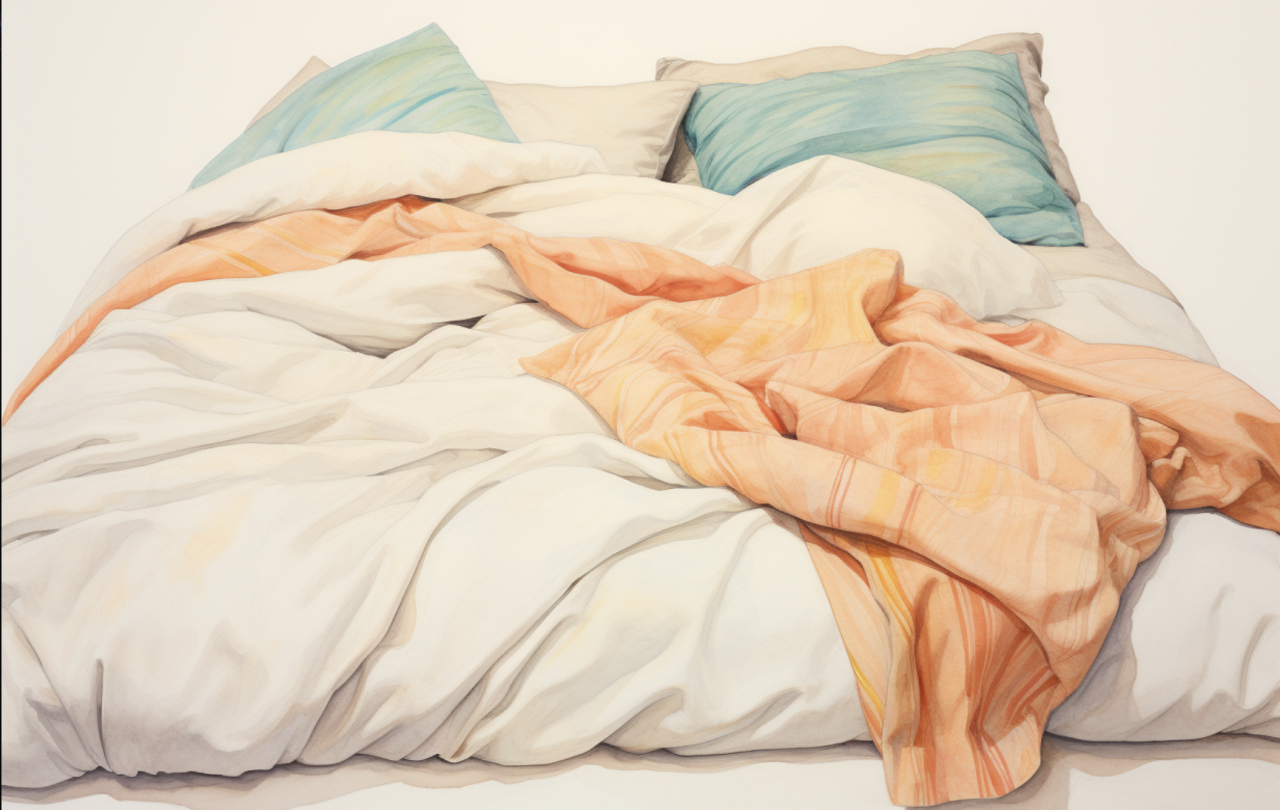
Sloth is the most perplexing of the seven deadly sins, and the one that is hardest to define. Most people would probably think first of laziness when they think of sloth. On the other hand, sloth is often related to the older Latin idea of ‘accidie’, which is sometimes translated ‘spiritual weariness’ or ‘despair’. But these two definitions indicate the problem we have with sloth. If it is just sheer laziness, it might be considered as a slight moral failing, but most of us would hardly classify a little idleness as one of the great threats to human life. Sleeping in just a little longer in the morning hardly promises to bring western civilisation to its knees. On the other hand, if it is defined as ‘despair’, that sounds very close to ‘depression’, and we know that depression is usually an illness that afflicts some people without their choosing – it is not a freely chosen pattern of life, an act of disobedience to God or anyone else. By this understanding, sloth hardly counts as a sin either. Sloth is either too trivial to worry about, or too involuntary to blame.
Clinical depression is an illness that can hit people for no apparent reason and for no fault of their own. The symptoms are similar, but it is important to distinguish depression from sloth. Depression can be caused by genetics, a traumatic event or the misuse of drugs. Sloth is not depression – it is another form of despair that starts with small things, a deliberately chosen shrug of the shoulders, a turning away from someone in need, a switching off of something in the heart. Sometimes it can be caused by disillusionment with life, but it sets in a pattern of allowing yourself to drift towards a languid ‘couldn’t be bothered’ approach that in time becomes a habit of life.
Once sloth, or spiritual weariness, gets hold of you, it is hard to shake off, and it can lead to disaster. Sloth is essentially a giving up on life, and it leads to finding no pleasure in it, a dull, steady torpor that expects nothing new, nothing exciting, nothing worth getting out of bed for. Dorothy Sayers wrote of sloth:
“It is not merely idleness of mind and laziness of body: it is that whole poisoning of the will which, beginning with indifference and an attitude of ‘I couldn’t care less’, extends to the deliberate refusal of joy and culminates in morbid introspection and despair.”
When we lose the passion for life, goodness, laughter and joy, then it may be a sign that sloth has fixed its grip on us.
Our culture is the most over-stimulated in history. Only a generation or two ago, children had to make do with a football, a doll, a game or two and a few friends. Then black-and-white computer ping-pong was born, closely followed by Space Invaders and we all thought the ultimate in entertainment had arrived. We were never to be bored again. Those games now look stone age. Yet with the arrival of unlimited information at the click of a mouse, games with graphics enabling you to fly the world, fight the Second World War and create your own civilisation, have we eradicated sloth or boredom? If anything we have increased it.
Peter Kreeft comments:
“how do we explain the irony that the very society which for the first time has conquered nature by technology and turned the world into a giant fun-and-games factory, a rich kids’ playroom, the very society which has the least reason to be bored, is the most bored?”
The problem is that however intricate the technology, however scintillating the entertainment, it soon gets superseded by something else. Hence, it’s hardly surprising when we turn our noses up at the triumphs of yesterday, as we have something better today, and when we even get disillusioned with today’s wonders, knowing they will soon be consigned to history as well.
But to dig a little deeper into the origins of sloth, Thomas Aquinas describes it as “sadness and abhorrence or boredom regarding a spiritual and divine good”. He refers to what happens when through numerous small choices and turning points, a person becomes incapable of being stimulated by anything good or beautiful or wise. Or worse, when goodness, beauty or wisdom evoke a response of disgust or a cynical smirk. When we lose the passion for life, goodness, laughter and joy, then it may be a sign that sloth has fixed its grip on us. It happens when there is nothing left, outside ourselves, to really believe in.
Looking at the other sins, we might be forgiven for thinking that they are a long list of restrictions, a denial of some of the fun things in life, a restriction on our pleasure-seeking, a dampener on passion. It is the inclusion of sloth on the list that gives the lie to this once and for all. Sloth is precisely a lack of passion, a settled laziness that for whatever reason fails to get worked up about poverty or cruelty or the threat to life on earth through climate emergency. It is a dullness that fails to wonder at green rolling hills, brooding mountains, an act of sheer unexpected kindness, the birth of a baby, Botticelli, Mozart or Taylor Swift (take your pick from the last three, or add more – beauty is naturally subject to taste). It is the spirit that reacts to cruelty, injustice and pain by shrugging the shoulders and switching the channel. Christianity encourages a passion for life and all that is good and beautiful. That is why it is fundamentally opposed to sloth, and puts it firmly on the list of habits to be shunned at all costs.
According to the Christian account of life, we are beings created with a capacity for immense joy, passion, wonder, inquisitiveness and emotion. The world was created as an arena for all this enchantment. It was made so that we might regularly sit back in amazement at the fact that we get to live this life, this physical/spiritual life on this planet that is our home, a place of sheer beauty, the majesty of a lion, the speed of a hummingbird, the taste of pure water. We were intended to take delight in such things, to explore them and enjoy them, yet most of all we were intended to delight in their Creator, the author of all this goodness, the one from whom they (and we) all come, the most beautiful and desirable one of all.
In his great autobiographical reflection entitled ‘Confessions’, St Augustine says of the human race: “they choose to look for happiness not in you, but in what you have created.” Now Augustine himself was never quite sure whether taking pleasure in created things was a good idea or not, however, he did at least make this one point supremely well: that our ultimate joy was to be found in God. The joy we find in sunsets, friends and apple tart are tasters, anticipations, to give us a taste for the very best, which is God himself. And conversely, when we lose our taste for God, we are likely sooner or later, to lose our taste for other good things, or even to develop a taste for things that are bad for us, like hallucinogenic drugs or the thrill of theft or even cruelty, that try to imitate the ecstasy of a close connection with God.
I remember my first taste of Guinness. The dark, swirling Irish drink had always had a fascination for me growing up, and I remember the first time I plucked up courage to look older than my age, and bought a can in the local store to give it a try. It was foul. I hated it – it tasted sour, bitter and unpleasant. It didn’t help that it was a hot summer’s day and the beer was warm, but that didn’t matter – it was the kind of experience that might have made me never touch the stuff again. It wasn’t until later on, a few years older, after a bit of perseverance that I began to appreciate the hidden flavours, the rich, full wheaty taste. I learnt that just because it didn’t taste like lemonade did not necessarily mean that it was bad. As I learnt to appreciate and enjoy it, Guinness soon became a favourite drink, something I would choose above all others.
If it doesn’t sound too irreverent, for many people it is a bit like that with God. The idea of enjoying God is about as appealing as that sip of Guinness was for me aged 16. Yet in time, we can learn to appreciate things that have a deeper richness, a more profound taste. Guinness is a trivial example, but the same can be true of God – an acquired taste can take a while to come, but when it comes, it is the richest of all.
The great past masters of the Christian way advise us that the surest way to combat sloth, the turning away from all that gives life, is to cultivate not just a zest for life, but an unlikely but deeply satisfying desire for the one who gave the gift of life in the first place.





